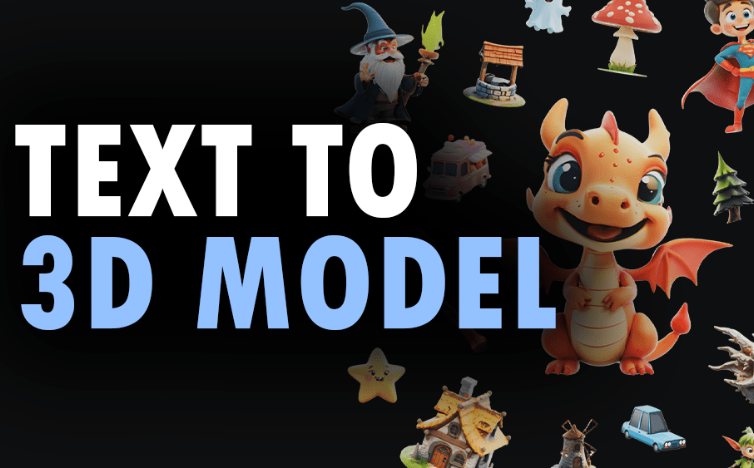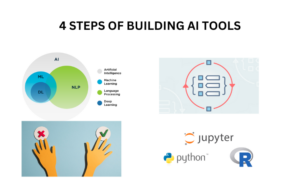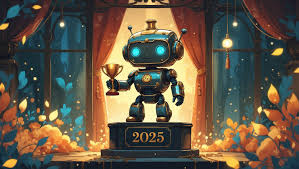In today’s digital realm, where technology constantly pushes the boundaries of creativity, text-to-3D AI generation is an emerging marvel. This innovative technology transforms descriptive text into intricate 3D models, opening a new frontier for AI enthusiasts, content creators, and the tech industry. Imagine typing a phrase and witnessing it come to life as a tangible object in a virtual space. In this blog post, we will explore how this fascinating technology works, spotlight key players like Meta 3D Gen and OpenAI Shap-E, and examine its implications for the future of creativity and innovation.
Table of Contents
Decoding Text-to-3D AI Technology
Text-to-3D AI generation may sound like magic, but it is deeply rooted in complex algorithms and machine learning principles. At its core, text-to-3D AI uses natural language processing (NLP) to interpret descriptive text and translate it into a 3D model. This involves understanding the semantics of the text to visualize how the described object should appear in three dimensions. The AI then uses 3D modeling techniques to create a digital representation that matches the textual description.
This process requires immense computational power and advanced AI models trained on vast datasets. The AI must comprehend nuances in language to accurately generate objects that might not be explicitly described but are implied. This ability to infer and extrapolate makes text-to-3D AI a powerful tool in content creation and design.
The Pioneers Leading the Charge
A few trailblazers are at the forefront of text-to-3D AI technology, each contributing unique advancements. Meta 3D Gen, for instance, has developed an innovative platform that leverages AI to generate high-quality 3D models from simple text inputs. Their approach integrates advanced AI models with intuitive user interfaces, making it accessible for creators of all skill levels.
OpenAI’s Shap-E is another significant player, utilizing cutting-edge AI to convert text into detailed 3D shapes. By focusing on user-friendly designs and scalable solutions, OpenAI aims to democratize 3D modeling, enabling more people to engage with this technology. Each platform brings its strengths to the table, enhancing the field of AI-driven 3D creation.
See Also: 6 Best Sketch to Image AI Rendering Tools
Applications Across Industries
The potential applications for text-to-3D AI generation are vast and varied, touching numerous industries. In gaming, this technology allows developers to rapidly prototype and create game assets, saving time and resources. Designers in architecture and interior design can visualize concepts based on textual descriptions, streamlining the creative process.
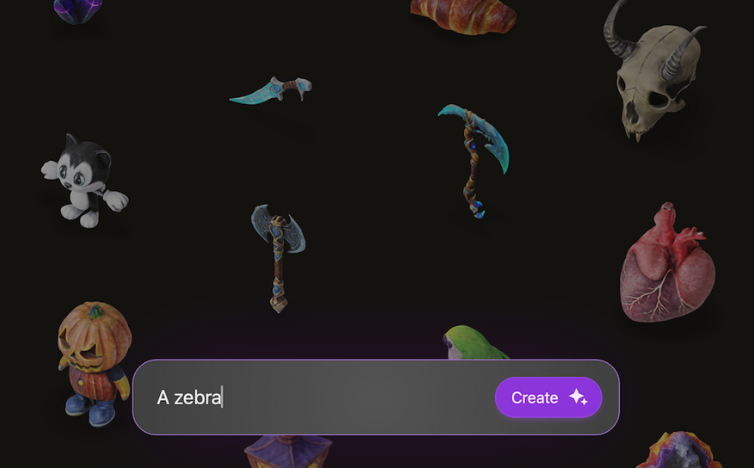
In the educational sector, text-to-3D AI provides an interactive way to engage students with complex subjects. For instance, a history teacher could input a description of an ancient artifact and generate a 3D model for students to explore. This interactive element enhances learning experiences by providing a tactile representation of theoretical concepts.
Impact on Content Creation
Content creators stand to benefit significantly from text-to-3D AI technology. Bloggers, YouTubers, and digital artists can use these tools to elevate their projects, transforming ordinary content into extraordinary visual experiences. By incorporating 3D elements generated from text, creators can offer their audiences a richer and more immersive engagement.
This technology also reduces the barrier to entry for creating 3D content. Previously, producing high-quality 3D models required specialized skills and software. Now, with text-to-3D AI, even those without a background in 3D design can produce professional-grade models, expanding the creative possibilities for content creators worldwide.
See Also: 10 Best AI Tools for Character Generation for Creators
Enhancing Virtual and Augmented Reality Experiences
Virtual and augmented reality (VR/AR) stand to gain immensely from text-to-3D AI technologies. In VR, creating immersive environments is crucial. Text-to-3D AI can rapidly generate virtual landscapes and objects from textual descriptions, enriching the user experience with diverse and dynamic content.
For AR applications, this technology allows for real-time generation of 3D models that can be overlaid onto the real world. Imagine using a mobile app that lets you describe an object, such as a new piece of furniture, and see it appear in your living room through an augmented reality view. This level of interactivity and customization enhances the practical applications of AR in everyday life.
Challenges and Considerations
Despite its potential, text-to-3D AI technology faces several challenges.One major challenge is making sure the generated models are accurate and reliable. AI must consistently interpret text with precision and creativity to meet users’ expectations for quality and realism.
Another challenge is the computational resources required to run these advanced models. High-performance computing infrastructure is essential to support the demands of training and deploying AI models at scale. Ensuring accessibility while maintaining performance is a delicate balance for developers working in this space.
Ethical Implications and Responsible Use
With any powerful technology, ethical considerations are paramount. Text-to-3D AI raises questions about intellectual property and content ownership. When AI generates a 3D model from a text prompt, who owns the rights to that creation? Establishing clear guidelines and frameworks will be essential to navigating these complexities.
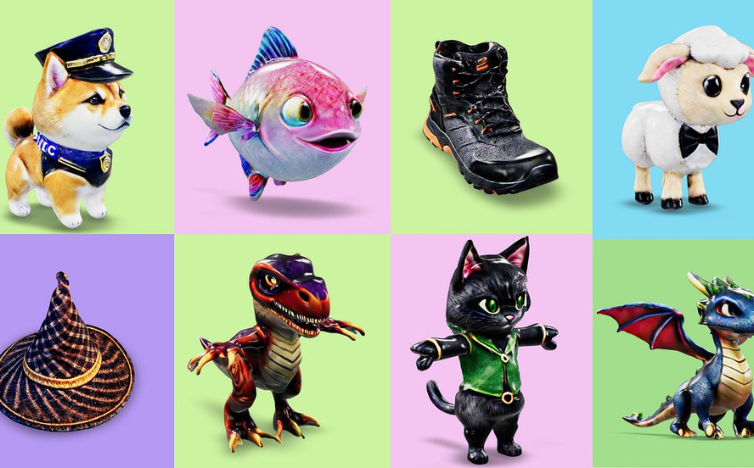
Additionally, ensuring this technology is used responsibly is crucial. Developers and users must consider the potential for misuse, such as generating harmful or misleading content. Practicing ethical AI development will help mitigate these risks and promote positive outcomes for society.
See Also: What are the Ethical Issues of Artificial Intelligence
Future Prospects and Innovations
The future of text-to-3D AI generation is undeniably bright, with ongoing developments promising to expand its capabilities further. Researchers are continually refining AI algorithms to improve accuracy, speed, and versatility. Emerging innovations may include real-time text-to-3D generation, allowing for spontaneous creation in dynamic environments.
Integration with other AI technologies, such as generative adversarial networks (GANs), could enhance the detail and complexity of generated models. These advancements will pave the way for more sophisticated applications, pushing the boundaries of what text-to-3D AI can achieve.
A Community of Innovators
The growth of text-to-3D AI technology relies on a vibrant community of innovators, from researchers and developers to content creators and end-users. Collaboration and knowledge sharing are vital to driving progress and ensuring this technology reaches its full potential.
Online forums, conferences, and open-source projects play a crucial role in fostering collaboration and innovation. By participating in these communities, individuals and organizations can contribute to shaping the future of text-to-3D AI and its applications across various fields.
Exploring the Intersection of Art and Technology
Text-to-3D AI generation represents a fascinating intersection of art and technology, blurring the lines between creative expression and machine intelligence. Artists can leverage AI tools to explore new forms of creativity, generating unique and imaginative 3D artworks from textual prompts.
This blend of fields creates exciting chances for artists and tech experts, promoting experimentation and expanding traditional art practices. As AI continues to evolve, it will undoubtedly inspire new artistic movements and redefine the possibilities of creative expression.
See Also: 9 Best AI Tools for Image Generation
The Role of AI Enthusiasts and Content Creators
AI enthusiasts and content creators are at the forefront of this technological revolution, driving adoption and innovation. By exploring the capabilities of text-to-3D AI, they can demonstrate its value and inspire others to join the movement. Sharing experiences, insights, and success stories will help demystify the technology and encourage broader participation.
Whether you are an AI enthusiast looking to experiment with new tools or a content creator seeking fresh ways to engage your audience, text-to-3D AI offers a wealth of opportunities to explore. By staying informed and open to experimentation, you can harness the power of this technology to elevate your projects and push the boundaries of what is possible.
Forging a Path Toward the Future
Text-to-3D AI generation is a groundbreaking technology with the potential to transform industries and redefine creative expression. By understanding its workings and exploring its applications, AI enthusiasts, content creators, and tech industry professionals can unlock new possibilities and drive innovation forward.
As we move into a future where AI plays an increasingly integral role in our lives, staying informed and engaged with emerging technologies like text-to-3D AI will be crucial. By fostering a spirit of collaboration, creativity, and ethical responsibility, we can ensure that this technology benefits society as a whole and paves the way for a more connected and imaginative world.
If you’re ready to explore the world of text-to-3D AI and unlock its potential for your projects, now is the perfect time to start. Delve into the tools and platforms available, connect with fellow enthusiasts, and begin your own creative journey into the future of digital innovation.
FAQs
What is text-to-3D AI technology?
Text-to-3D AI is a technology that enables the generation of 3D models from textual descriptions. By interpreting language inputs, AI systems can create detailed and realistic 3D representations, bridging the gap between written ideas and visual creations.
How does text-to-3D AI work?
Text-to-3D AI models typically use natural language processing (NLP) to understand text prompts and computer vision techniques to generate corresponding 3D models. These systems rely on large datasets and complex algorithms to learn patterns and associations between language and visual outputs.
What are the potential applications of text-to-3D AI?
The applications are vast and varied, ranging from gaming and virtual reality to architecture and product design. Text-to-3D AI can help create immersive environments, prototype new products, and enhance digital storytelling, among other uses.
What challenges does text-to-3D AI face?
Key challenges include ensuring model accuracy, managing computational resource demands, and addressing ethical concerns related to intellectual property and misuse. Maintaining a balance between accessibility and performance is essential for its successful deployment.

